|
Our 4 months living in Southeast Asia can be broken down into 5 parts:
Thailand was a great start. We jumped into the deep end of digital nomadism, swimming in an exotic culture, and enjoying a slower pace after the frenetic pace of Australia. Bangkok was a sort of purgatory as we waited to visit Bali. Bali was like an overharvested cornfield, a deep disappointment sprinkled with tasty moments. How desperately we needed Hoi An to be different, to be the anti-Bali, to deliver on the promise of why we chose to visit Asia in the first place. And how relieved I am, five weeks later as write these words on the plane back to Melbourne, to reflect that Hoi An delivered. Everything clicked. The warmth of the locals was sincere and inspiring. The food was fantastic. The facilities we found were top-notch. The friends we made were lovely. The house we lived in was the best of any we’d stayed in, the water buffalo abundant, the excursions fun. And most of all, the timing was perfect. Wet season along the central coast of Vietnam officially starts September 1st, the day of our arrival. But the rains only came October 1st, four days before our departure. What September did was dampen the interest of high-season hordes. Hoi An’s lantern-lit night markets, ancient storefronts and coastal attractions were busy, but never overcrowded and unmanageable. It also meant that the locals were even friendlier, flashing their gentle smiles and gifting the kids lollipops. Da Nang, the city that services Hoi An (located 45 minutes drive away along a quiet four lane highway) is exploding. It’s got a lovely long white sandy coastline with resorts and apartments starting to encroach. “This is probably what Rio looked like in the 1960’s,” says Ana. Given its turbulent history, communist Vietnam has embraced modern tourism with a fever, attracting bus loads of Chinese and Korean tourists with mega-resorts sprouting all along the coast, edging closer and closer to Hoi An’s old city. The Four Seasons, the Intercontinental, the Sheraton – it’s all coming in thick and fast, and it’s going to change everything, indeed, it’s already changing everything. The Canadian owner of Dingo Deli – one of our favourite hangouts with its great food and play area for the kids – tells us he was one of the first European families in Hoi An, when the inbound artery of Cua Dao was still a dirt road. This was less than a decade ago. Today, coffee shops and restaurants and tour operators and ubiquitous tailor shops and ATM’s and opulent-looking boutique hotels and mini marts line the paved roads to the Ancient City. In a decade, Hoi An could well become another Bali. And while it felt like we missed the boat with Bali – which must have been incredible a couple decades ago, at least we discovered Hoi An when the going was good. When we could walk beneath the colourful lanterns, scooter through rice paddies, lie in hammocks under coconut trees, shop in busy local markets, and drink strong coffee on the patios. The kids might remember key moments from the photographs that captured our stay, but we’ll remember the general feeling of cultural bliss, contentment, and adventure. Without doubt Hoi An proved to be the highlight of our Big Year, and one we’ll always remember with great fondness. With the pace of modern tourism and the explosive growth of the mass Asian market, going back would probably be heart breaking. I’d never been to Vietnam, and now I deeply regret not putting it into my Modern Gonzo itinerary 13 years ago. It was a different country back then, just emerging from decades of Communist isolation. I’d heard a mixed bag of backpacker’s opinions: some complained they were ripped off every two minutes and hated it. Others said the people were lovely and it was their highlight of SE Asia. And now, so many years later, I heard the same stories, which illuminated the discrepancy. It appears the the big overcrowded cities are intense, and travellers feel preyed upon. Ho Chi Minh (aka Saigon) and Hanoi sound like places far removed from the reggae music, siestas and watermelon shakes we found in Hoi An. It is a small town that repeatedly came up in conversations with friends about places they loved most, and wished they could have stayed longer. Chiang Mai was the other one, and so no surprise we ended up in both. My knowledge of Vietnam, like so many 80s kids growing up in the age of ‘Nam movies, is pretty tainted by the Vietnam War, or what the Vietnamese call the American War. All that’s in the past. Heck, it seems that Communism is in the past, the Vietnamese taking their cue from China – the powerful neighbour that has played a huge influence on Vietnamese culture for millennia – embracing capitalism within the confines of a one-party state. Tourism is embraced and protected. After somehow talking my way out of corrupt police roadblocks in Bali and Thailand, I do not recall any police presence at all during five weeks in Hoi An. Gem’s Rider, where I rented our 130cc Yamaha Nuevo scooter, wanted to keep my drivers license as collateral. “But what about police and roadblocks?” I ask. “Oh, they’d never bother any tourists,” was the reply. Everything here appeared peaceful, the roads were clean, people got about their business (working 7 days a week, I should add). More than once I walked into a store during the hot mid-day siesta to find it abandoned, the products unattended and inviting theft from anyone off the street. It’s why we stopped locking the front gate. If locals are unbothered by petty crime, why should we be? The only relics from the war were the stories we heard from an Israeli we met who was disarming bombs in the countryside for an NGO – “more bombs were dropped on Vietnam than were used in the entire World War II” – and an underwater mortar shell that Ana saw in the bay when she was doing her diving certification. It continued to amaze me that these peaceful, gentle people inflicted a military defeat on the United States superpower, and then swiftly invaded Cambodia to unseat the horrific Khmer Rouge, and then held off an attack from China. The Vietnamese are strong yet peaceful, gentle but unbelievably proud. We Air Bnb’d a house located over the bridge from the Ba Le Market off Cua Dai, in a neighbourhood served by narrow alleyways that can barely squeeze a car. Next door to us was a small holding with banana and coconut trees, and across the road was a modest yellow temple on the shores of a large river. The house was called Mali One, consisting of 4 bedrooms and 4 bathrooms, two upstairs and two downstairs, typically rented individually. We took the whole place, giving Amy her own space and a different area for Raquel’s home-schooling. With temperatures ranging between 28C – 35C, air-conditioners in each bedroom were essential for sleep, and fans aerated the muggy air in the living areas. The shower pressure was great, , we could flush toilet paper, and brush our teeth with tap water. There were roosters next door and across the street, but their crows didn’t destroy us like they did in Chiang Mai. Dozens of geckos patrolled the walls, and fortunately we’d missed the brunt of mosquito season. A giant spider hung out downstairs by the front door, but we pretended not to notice it. On our first morning, discovering the Dingo Deli by chance, we met a Canadian family temporary living in Hoi An with their two daughters, the same age as Raquel and Galileo. We got to know Meredith and Jonathan, Charlotte and Aria well over the next 5 weeks, and shared the joys and challenges that come with schlepping your family around the world. They introduced us to Kahunas – a friendly backpacker’s beach club that welcomed families to swim in their pool and use their beach chairs. No $50 entry fee, no Bali exclusiveness. Having broken in our scooter skills, we could pile onto the long backseat of the Yamaha and cruise the relatively calm streets of Hoi An and its surrounds. Vietnamese scooter driving is as insane, probably more so, than in Bali. Bikes come from every direction, at any time. People bike on the wrong side of the road or on the pavements, using lights when they feel like it, carrying washing machines or mirrors or other bikes on their bikes, honking repeatedly and unnervingly. We saw a couple accidents, and drunk people who could barely stand much less pilot a bike. One hapless duo as so hammered on their bike they literally fell over in the middle of the street. The difference with Bali’s madness is that there was a lot less traffic. Outside of the hectic 4pm to 5pm school hour, the roads were generally calm and the highways basically empty. Ana and I took the bike on a roadtrip to the Hai Van Pass, cruising over mountains and through some of the busier traffic areas in Da Nang. As crazy as the riding and traffic was, it never felt nearly as dangerous and as desperate as in Bali. As a bonus, concrete paths created shortcuts through the green rice paddies that surrounded Hoi An, showcasing water buffalo and farmers in pointy hats accompanied by wonderful feelings of exoticness and travel buzz. I never wore a helmet, and have confirmed that riding a scooter with the warm tropical wind in my hair is as close to nirvana as I can be, more-so when I feel Raquel hugging me at the back, and have Gali holding onto the antennae-like mirror stands in the front. Speeding along the the “water buffalo road” to Kahunas, and zipping about the rice paddies on the bike, comprise my singular best moments of the entire year abroad. Just about every morning I would pop on the bike and ride around the corner – slowly across the road that became more and more flooded – to the Ba Le market. Fresh bananas, mangoes, dragon fruit, watermelon…I’d have to haggle but at 17,000 dong to one Canadian dollar, it was always a bargain. Some ladies ripped me off more than others, my favourite was Miss Huey, who always added a handful of fresh mint, spring onions, basil and other herbs the Vietnamese add to the soups, noodles and sandwiches. Across the road was the white house bakery, where I could buy fresh baguettes and breads, and a little further down, the Hoi An version of Bali’s Everything Shop, although it wasn’t very big and certainly didn't have everything. There were no supermarkets in Hoi An, no 7-11s, no Cocomarts or Pepito Express – and the two stores that sold groceries left no doubt that it was cheaper and a lot easier to just eat out. Meals would cost between 30K – 130K, depending on the type of restaurant, and unlike Thailand or Bali, there were plenty of affordable Western options. Raquel liked her freshly squeezed lime juice, Gali his watermelon juice, and every day the kids would have their Yakult and Milo drinks, along with homemade ice lollies from juice. We made our own smoothies, and although I cooked schnitzel a couple times, we got a lot of take-aways from one-person kitchen restaurants nearby. Visitors to Hoi An typically come for about 2-3 days, rent a bike to cycle in the rice paddies, visit the lantern-lit Ancient Town, check out a few temples perhaps, and pop into a tailor to get a suit, dress or shirt made. Every Friday we’d go to the Chabad – always the only non-Israelis – and those we spoke to were amazed we were actually living in Hoi An. “But what is there to do here?” they’d ask, and we’d say, “not much, which is why we love it.” After having done so much this year, the opportunity to spend days by a luke-warm pool drinking Larue, Saigon or Tiger beer sold cheaper than bottled water while the kids play with new friends to the tunes of vintage reggae is as close to paradise as we can hope for. Of course we got the suits and dress made, it’s the thing to do here, and you’ll struggle to find bespoke tailoring cheaper. On the advice of someone from the Hoi An Expats Facebook group, we ended up at Cloth Shop Sue, where I got a suit, a blazer, 4 shirts and 3 waistcoats, and Ana got a suit, dress, and pants. Shipping wasn’t too expensive, so we sent 26kg of clothes, souvenirs, books, and other stuff we’re trired of schlepping around home to Canada via sea. Hopefully it arrives! In our home was a 2002 copy of Lonely Planet Vietnam, and the country it describes is very different from the Vietnam 16 years later. Hoi An is described as a small but popular town famous for its temples - we only visited one of them, by accident. Our two sojourns were me taking Raquel on the bike to the Marble Mountains, a series of limestone outcrops overlooking flat Da Nang. We took the elevator up to the top and visited a couple cave temples, sweating bullets in the process. After riding 90 km;/hr with Raquel, I’m more confident than ever to get a motorbike! Our second adventure was to the Ba Na Hills, a bizarre kitschy French medieval-style theme park built high in the mountains, and serviced by cable cars. It was expensive and took a while to get to, but the admission price included all the rides, and they’d recently unveiled a stunning “hand” bridge that made world news when it was unveiled a few months before we got there. We went to see a water puppet show, which was quite fascinating, visited Cham Island, which was less so. Amy took the kids on a small traditional boat that looks like a saucer, after which they made stuff with coconut fronds. We visited the Ancient Town a couple times, took the boat on the Ancient Town to let the kids make a wish as they released a floating candle-lantern. We hit pub night where we didn’t fare particularly well but did win a pitcher of beer, and followed that up by a visit to the Dive Bar, which wasn’t a dive bar at all, and watched Jonathan support the local nitrous oxide balloon dealer. With booze this cheap, tourists were more than happy to buy rounds for everyone. For Ana’s birthday, Amy looked after the kids while Ana and I spent the night in a fancy hotel, having dinner and dancing to a samba band (yes, a samba band!) at a place called Soul Kitchen in An Bang. From the layabout couches to the kid-friendly restaurants on the beach, there was just so much to love here. Raquel even took ballet classes on Saturday mornings, with an English teacher who knew what she was doing (in stark contrast to Bali). The expat community heard about us and it’s a small circle – the folks with young kids living in a small town in a strange country. Otherwise, no lost boys in caves or tragic earthquakes, although the ceremonial president of Vietnam did die, not that we (or the rest of the world) heard much about it. A typical day looked like this: 6am - 8am: Wake up, make breakfast, hear about Amy’s evening exploits with the South Africans living in Hoi An teaching English to Chinese students online. 10am – 2pm: Kahunas or playdate 2pm – 4pm: Gali naps, Raquel does school with Miss Amy downstairs, Robin works in Australian Bucket List website/Ana explores/get PADI certified/rides around looking for baguettes. 4pm – 6pm: Kahunas or playdate with Charlotte or bike ride to the water buffalo or or some such thing. 6pm – 8pm: Dinner, shower and bed time. 9pm – 11pm: Monopoly Deal or Netflix or Pub Quiz or Girls Night Out or Book Reading or Sleep. Other memories: The Koi Café, the karaoke clubs, the weddings, the trips to the one ATM machine where you could withdraw 5m dong. The inflatable pool on our upstairs patio, emptying the water over the sides into the banana trees. Rosh Hashana and Yom Kippur, the Chabad eggplant, hunting for diapers, hunting for new shoes for Gali. The challenging Wednesday night Pub Quiz (the most populous mammal on Earth is not humans!), the Birthday night away in a real hotel and dancing to Samba at Soul Kitchen, the horrendous sound of river frogs, the power failures, the horrendous sound of Vietnamese karaoke, the insanely strong coffee, the kids doing this, the kids doing that… It’s all a blur, and time does fly when you’re having fun. Unlike Bali, where the highlights were crisp because they were fewer and far between, days in Hoi An blended into each other the way we blended the market fruit into smoothies. At the the end of it, when Amy looked after all four kids and we hit the town with Jonathan and Meredith - four parents of four young kids bewildered to have some fun time to ourselves - we realized we’d be sad to say goodbye, and yet if you don’t, months will blend in the same sort of motion blur. It’s just hard to get much done when the going is this good, and it’s the closest we’ve had to a family holiday since we took the kids to Maui in April 2017. For despite what people think, just because you’re travelling, it doesn’t mean you’re on vacation. At least, until you find yourself in a place like Hoi An, the kind of place travellers visit for a few days and end up staying for a few weeks, the kind of place that vindicates your wild, crazy, irresponsible and risky decision to go travelling for a year in the first place.
0 Comments
I'm posting this from the domestic airport in Buenos Aires in early December, and like the Christmas decorations are up. This got me thinking: How is Christmas celebrated around the world? Never one to let a question go unanswered, let's begin in: Japan Japan has only a small percentage of religious Christians, but many Japanese enjoy the spirit of gift-giving and decorating home and stores in tribute to the seasonal festivities. Instead of Santa Claus, Japanese children look to a legendary Buddhist monk named Hotei-osho, known for bringing children gifts, and making sure they behave. Ethiopia Ethiopia’s calendar differs from our western calendar, which is why they celebrated the year 2000 seven years after we did, and why Christmas takes place on January 7th. They also have a different clock, but that’s another story. Christianity in the country dates back to the 4th century AD, and its famous rock churches were built as a new Jerusalem by Ethiopian kings. The Xmas church ceremony has three rings of prayer: men and boys sit inside a ring of women and girls, with a choir on the outside circle. Candles in hand, worshippers also walk around the church three times during mass. Instead of turkey dinners, traditional feasts involve injera (the pancake-like bread of Ethiopia) and various stews and curries. Scandinavia Many North American Xmas traditions derive from Scandinavia, with Santa Clause living in Greenland or Finland, depending on whom you speak to. Millions of people have written letters and posted it to Santa’s address, just outside of Rovaniemi on the Finnish Arctic Circle (write to: Santa Claus' Main Post Office, Santa Village, FIN-96930 NAPAPIIRI). Yuletide has always had special significance in the Scandinavia, where traditions were formed to hold off the dark, cold days of winter. The Yule log was an entire tree, fed into the fire over the course of the winter, with much ceremony. In Finland, Xmas dinner is preceded by a visit to the sauna to bathe and clean for the meal. Candles are important throughout the region as a means of ushering in the warmth of light during a dark time of year. Bulgaria The Bulgarian Christmas Eve dinner consists of 12 courses, with each course representing a month of the year. Made with nuts, beans, vegetables and sweets, no meat is served. Tradition has the family seated on straw, and sitting down and getting up at the same time. In the past, boys and single men would visit houses singing carols for the health of the families (and maybe the eye of a maiden too). Brazil Around the country, in churches, homes and shops, many Brazilians set up nativity scenes called Presèpio, named after the bed of straw Jesus slept on in Bethlehem. Father Christmas is known as Papa Noel, flying in from Greenland to pass out gifts, dressed in silk because it’s too hot to be robed in furs. Religious Catholics head to Missa do Galo, the midnight mass named after the rooster that announces the coming day. Even the streets of Rio de Janeiro are quiet on Christmas Eve, as families gather for their Ceia de Natal feast. Like most days in Rio, Christmas Day is a perfect time to hit the beach. Philippines The only major Christian nation in Asia also celebrates its Misa do Galo, a tradition dating to its Spanish occupation. Unlike Brazil however, this mass takes place nine days before Christmas, and involves reading the story of Jesus. On Christmas Day, masses are held hourly so that everyone has a chance to attend. Pastore are plays based on the birth of Christ, performed at many religious services. Children go carolling for tips and treats and setting off fireworks, with another tradition being the making of lanterns, a symbol of the guiding star. Xmas dinner involves a lavish feast, often started after midnight when the family returns from midnight mass. Russia The inspiration of Santa Claus, St Nicholas, holds a special place in the heart of Russians. Revered as a saint since the 11th century, his name adorns many churches, and is commonly passed onto Russian boys. During the communist era, the role St Nick was transformed into Grandfather Frost, enabling traditions to be kept without antagonizing the atheist principles of the time. Similarly, Christmas trees became New Year’s Trees, although both traditions have reverted with the fall of the Soviet Union. Russians also talk about Babouschka, a woman who roams the countryside in search of Christ, giving gifts to children as she does so. Eastern Orthodox Russians customarily fast until after the first church service on Christmas Eve, and their feast contains no meat. One traditional dish is called kutya, a sweet porridge symbolizing hope and happiness, eaten from a common dish. Vietnam Christians are a minority in Vietnam, but Christmas is celebrated as one of the four major holidays of the year (along with New Year, the Buddha’s birthday, and the mid-autumn festival). Jesus Christ is known as Kito, and Christmas is a big cause for celebration, although this was not always the case. During communist rule, Christmas was relegated to the home and was not the public spectacle. As the country modernized and liberalized, Xmas has returned with a bang, with the usual lights and decorum proudly displayed throughout cities, shops, villages and homes. Merry Christmas, Happy Hanukkah, and all the best for the silly season!
|
Greetings.
Please come in. Mahalo for removing your shoes. After many years running a behemoth of a blog called Modern Gonzo, I've decided to a: publish a book or eight, and b: make my stories more digestible, relevant, and deserving of your battered attention. Here you will find some of my adventures to over 100 countries, travel tips and advice, rantings, ravings, commentary, observations and ongoing adventures. Previously...
July 2024
Categories
All
|

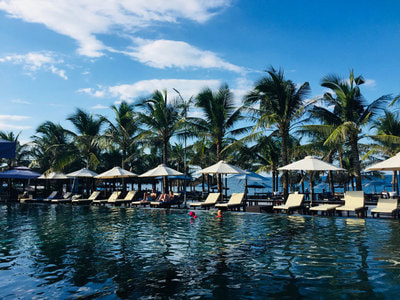
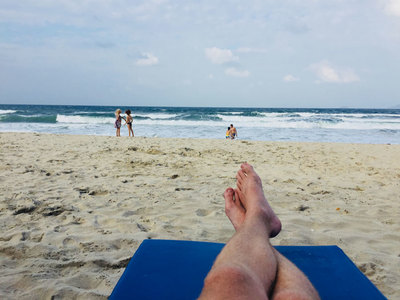
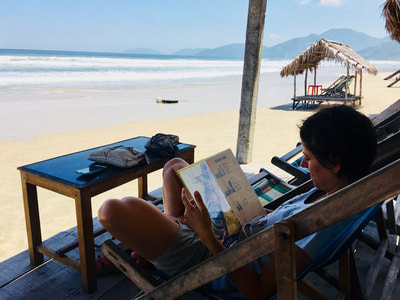
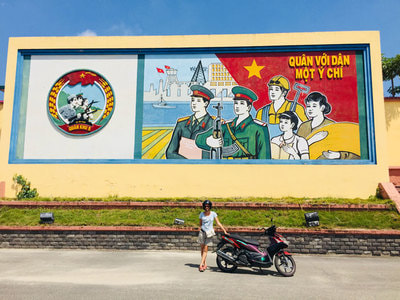
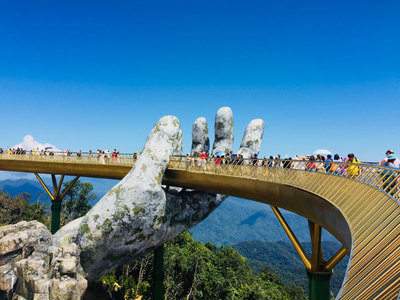
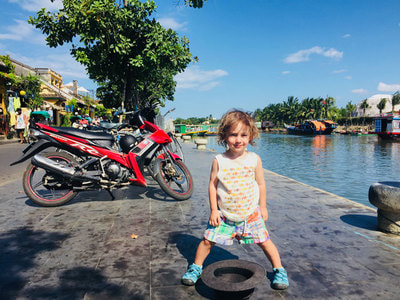
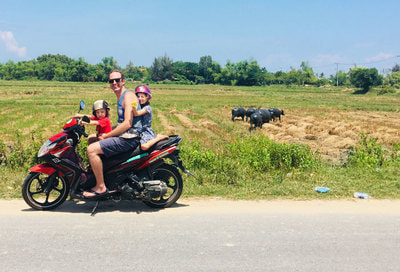
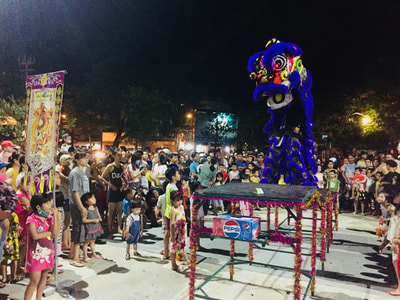
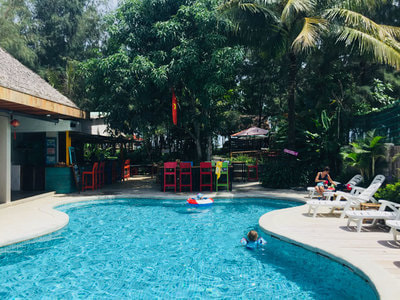
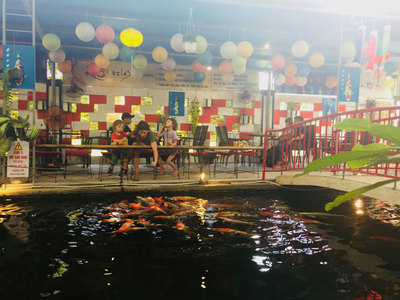
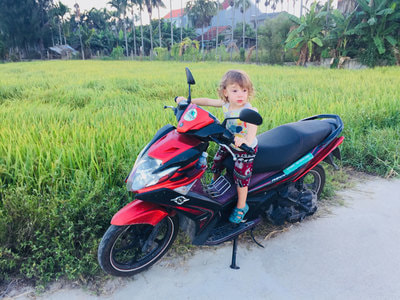
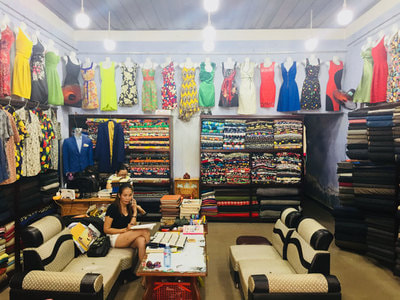
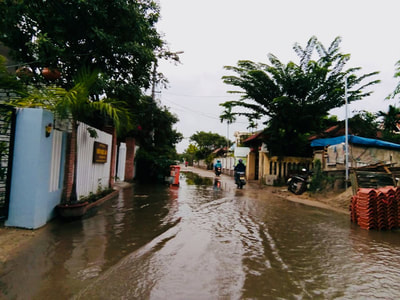
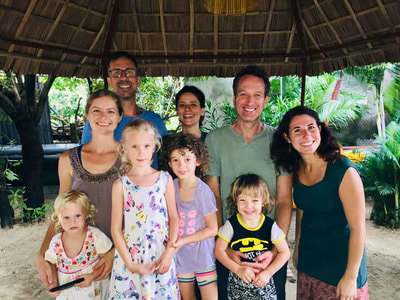
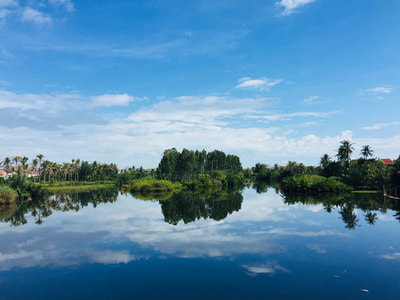
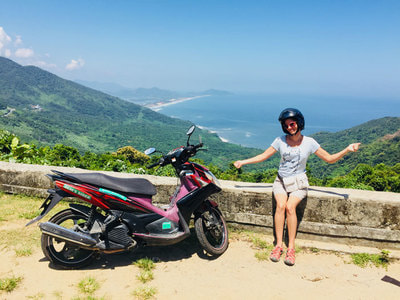
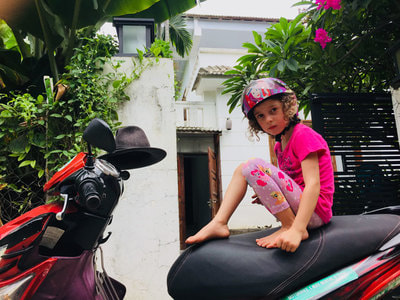
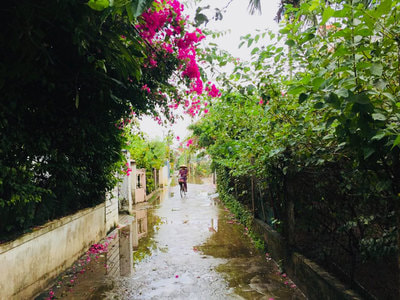
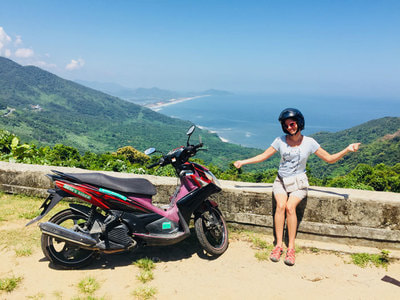
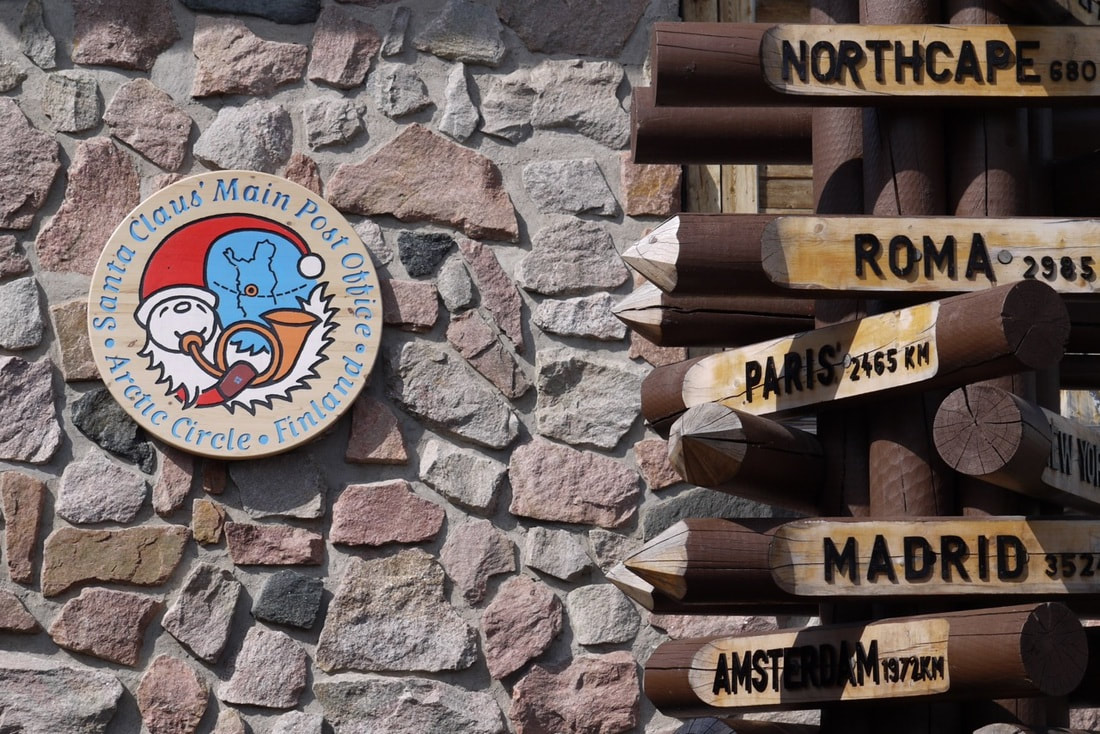
 RSS Feed
RSS Feed

